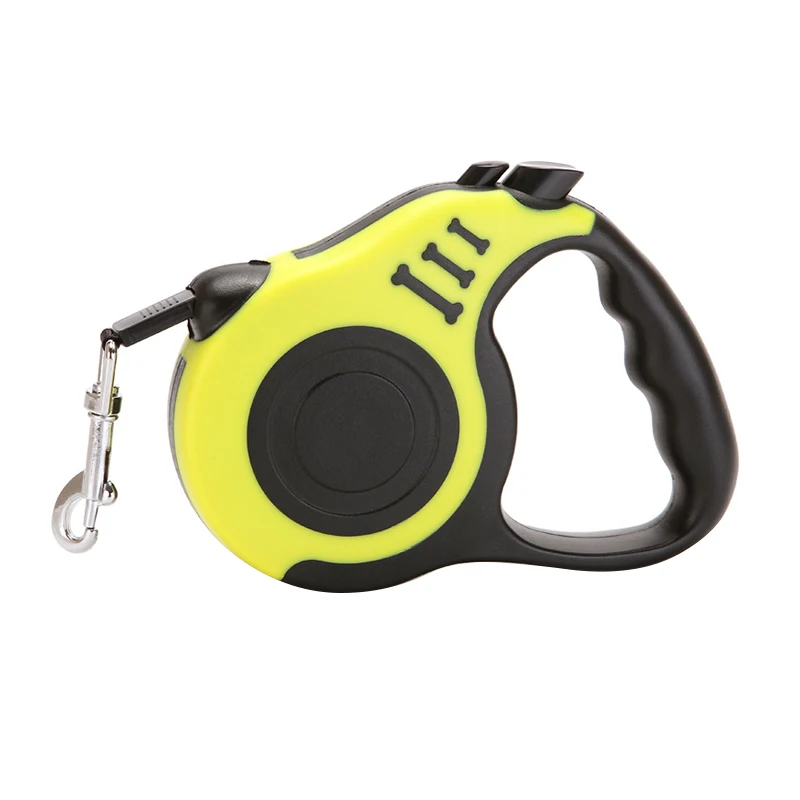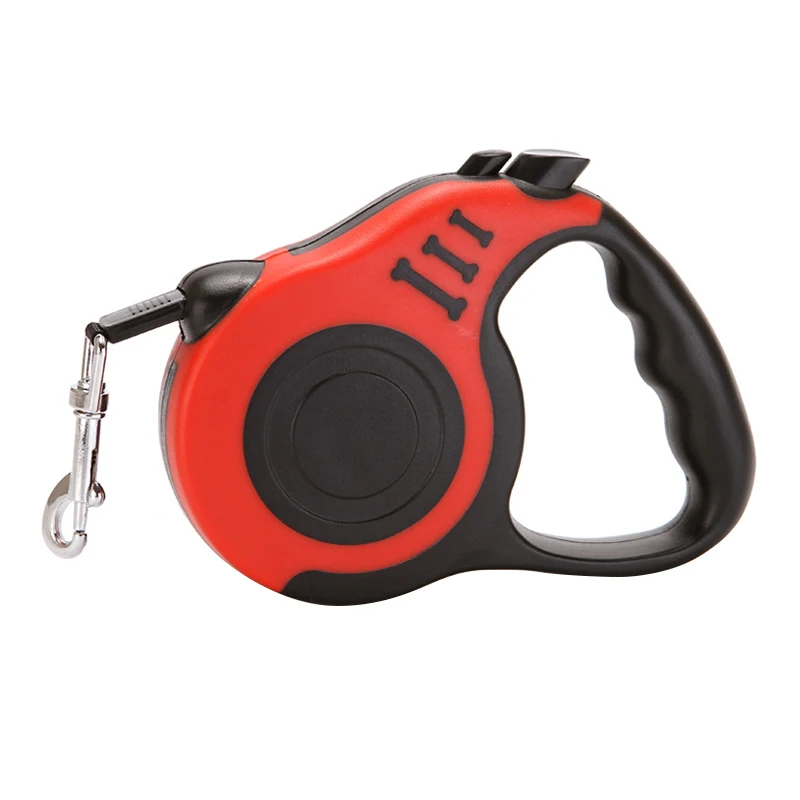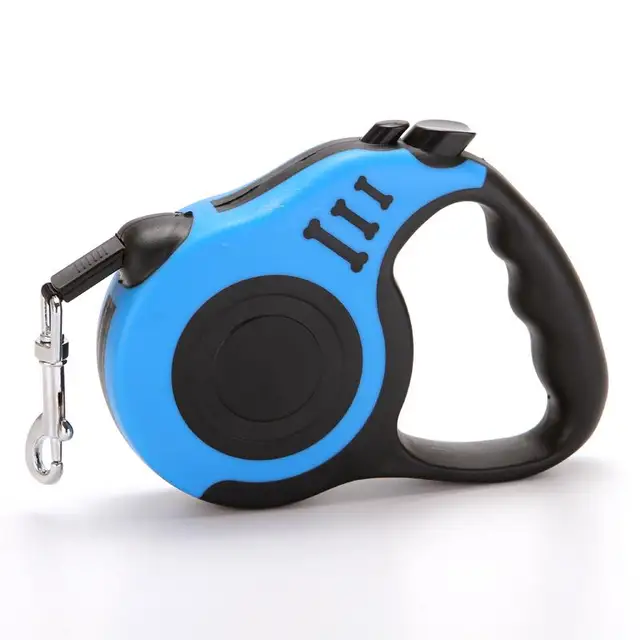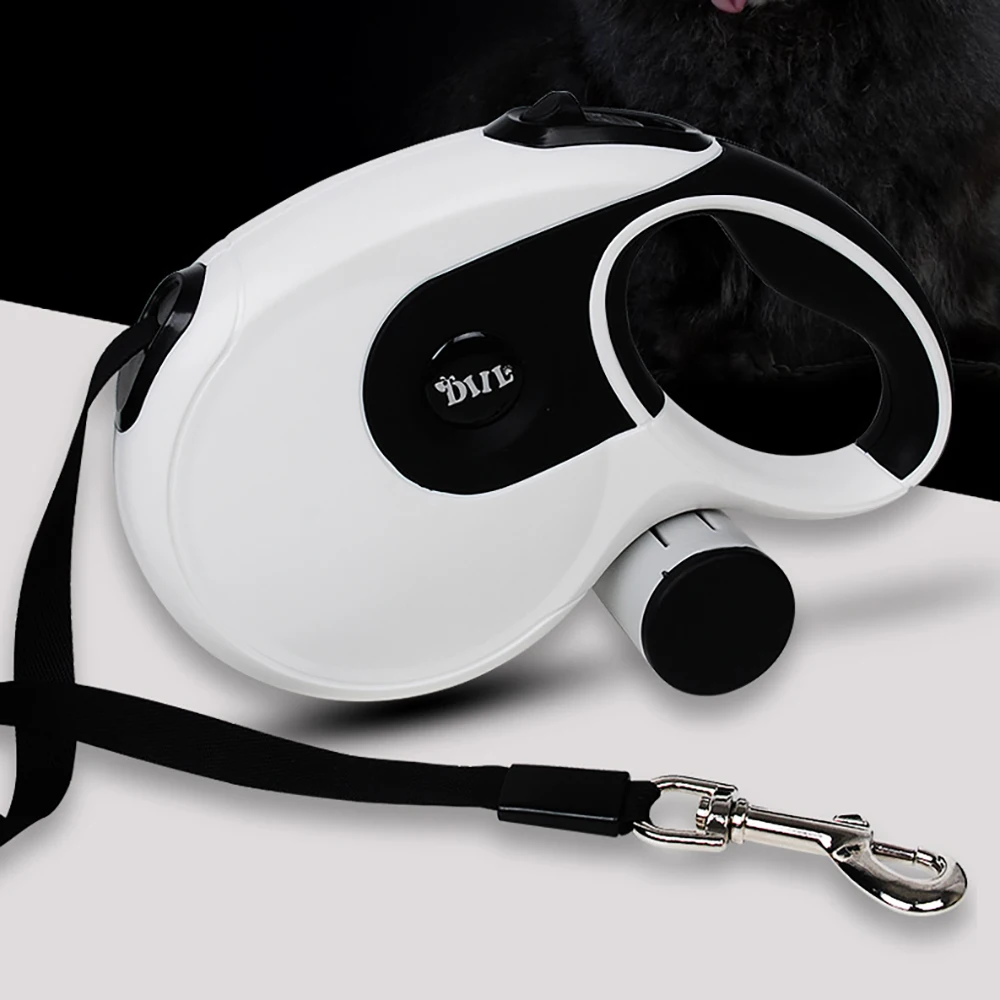Introduction to Retractable Leashes
Retractable leashes, also called Flexi leads, offer dogs freedom to explore. They work by a mechanism that allows the leash to extend and retract as the dog moves away and back towards the owner. This type of leash has a handle and a button to control the length. At a push, the leash locks in place, or retracts back into the handle.
These leashes can vary in length. Some reach up to 30 feet, giving dogs a wide range. They seem ideal for dogs who like to roam. Yet, they come with concerns for safety and training. Practicing loose leash walking becomes hard. The leash’s tension can encourage pulling.
Despite mixed opinions, retractable leashes have their uses. They might suit well-trained dogs in open spaces with no traffic. Yet, in busy streets or for walks with untrained dogs, they pose risks. With safety in mind, let’s dive into the risks and considerations for using retractable leashes.

The Risks of Using Retractable Leashes
When considering a retractable leash, understanding the risks is crucial. These leashes can cause harm. They can also disrupt training routines.
Potential Injuries to Dogs and Owners
Retractable leashes can extend far. This may seem good for freedom. Yet, it’s a recipe for accidents. Dogs can dart into traffic or get tangled. They can run into trouble before you react. The cord of the leash can injure. It can cause burns, cuts, and in extreme cases, finger amputations. The sudden stop at the end can hurt your dog’s neck. It can also give you a strong jolt, risking shoulder injuries.
Owners have reported numerous accidents linked to retractable leashes. These include deep cuts and severe burns. The mechanism can fail too, causing the leash to snap back. This could hit you or your dog, leading to face or eye injuries.
Behavioral Issues and Training Setbacks
Retractable leashes undermine training. Dogs learn to ignore the tension. They may pull even more. This goes against loose leash walking principles. Training should teach dogs to walk without pulling. But a retractable leash sends the wrong message. The consistent tension tells them to keep pulling.
Also, giving a dog too much space can backfire. They may feel empowered to ignore commands. Managing them becomes harder, especially in group training settings. Trainers often ban them in classes for this reason.
Choosing to use a retractable leash means understanding these risks. Knowing when and where to use them is part of responsible dog ownership.
Safe Environments for Retractable Leash Use
Retractable leashes aren’t all bad. In the right places, they work well. Knowing where to use them is key. Here are some safe environments for retractable leash use:
When to Consider a Retractable Leash
Consider a retractable leash when space is open and traffic is far away. Look for empty fields or quiet forest trails. Here, dogs have the freedom to explore. There’s little risk of running into traffic or other dangers.
Use retractable leashes on your own property. They can be good for quick trips outside. In a secure yard, they let your dog move more freely.
Think about your dog’s nature too. If they are well-trained and calm, a retractable leash might be fine. Make sure they can handle unexpected noises, like the leash handle dropping.
For owners with mobility issues, retractable leashes can help. They are easier to handle than long lines for some. Always focus on your dog’s safety first.
In summary, use a retractable leash in safe, controlled environments. Make sure your dog has space but is still safe from traffic and other hazards. Remember, these leashes are a tool. Use them with care and the right knowledge.
Alternatives to Retractable Leashes
While retractable leashes offer certain freedoms, they pose risks. Alternatives can provide safety and aid in training.
Traditional Leashes for Different Situations
Traditional leashes work better in many cases. They offer control and are simpler to use.
For everyday walks, a standard 4 to 6-foot leash is good. It helps in busy areas and during training sessions. A shorter leash keeps your dog close and under control.
If you’re hiking or training for recall, a 10-foot leash is useful. It gives your dog space but stays manageable.
In crowded places, a 2-foot ‘traffic leash’ is ideal. It prevents your dog from wandering too far.
Some leashes have a ‘traffic handle’. This is a bonus handle closer to the collar. It lets you grab your dog quickly if needed.
Reflective leashes are great for walks at night. They make you and your dog more visible to others.
For those who enjoy running with their dogs, ‘hands-free leashes’ are an option. These attach to your waist and let you move without holding onto a leash.
No matter what leash you choose, training for loose leash walking is key. This will make walks more pleasant for both you and your dog.

Guidelines for Responsible Use of Retractable Leashes
While retractable leashes have their place, using them responsibly is vital. Here are some guidelines to help.
Best Practices for Avoiding Accidents
- Keep the leash short in busy areas. This reduces the chance of tangling with people or objects.
- Lock the leash at a safe length. Choose a distance that keeps your dog close enough to control.
- Stay alert. Watch your dog and surroundings to respond quickly to any danger.
- Use the leash only with trained dogs. Make sure your dog responds to commands before using a retractable leash.
- Check the leash before each use. Look for wear and tear that could cause it to break.
- Avoid wrapping the cord around your hand. This prevents cuts and burns if your dog pulls suddenly.
- Train for loose leash walking before using a retractable leash. This teaches your dog not to pull.
- Hold the handle firmly. This prevents the leash from slipping or causing injury.
Responsible use of retractable leashes can prevent accidents. Follow these best practices for a safe walk with your dog.
Expert Opinions on Retractable Leashes
Retractable leashes are a topic of much debate among dog experts. Their convenience for owners must be weighed against potential risks and training challenges. Let’s look at insights from professional dog trainers.
What Professional Dog Trainers Say
Most professional dog trainers advise against retractable leashes. They stress the importance of control during walks. Trainers are conscious of the risks, particularly for pups in training, reactive canines, or in crowded spaces. Many classes ban them outright. Trainers advocate for leashes that support correct walking habits.
These experts highlight several issues with retractables:
- Misleading cues to dogs. These leashes often teach dogs that pulling is okay, confusing their training.
- Injury risks. The leashes can snap back, cause cuts, or even lead to amputations.
- Poor control. It’s tougher to manage a dog on retractable leashes, especially in unexpected situations.
- Behavior problems. Dogs may ignore commands due to the distance they afford.
Nonetheless, some trainers see a place for retractable leashes. They may recommend them in specific scenarios:
- Well-trained dogs in open areas have less risk.
- They can help owners with mobility issues who struggle with long lines.
- For short, controlled trips where safety isn’t a concern.
In essence, expert consensus asks owners to prioritize safety and training over convenience. Use retractable leashes with caution, in the right environments, and with well-trained dogs.
Conclusion: Weighing the Pros and Cons
When choosing a leash for your dog, it’s crucial to consider both benefits and drawbacks. Retractable leashes offer freedom but come with significant risks. They can cause serious injuries to both pets and owners. Amputated fingers, severe burns, and deep cuts have occurred. Dogs may also sustain neck or throat damage from jerking motions.
On the other hand, retractable leashes have suitable moments. They can be great for well-trained dogs enjoying open, traffic-free spaces. They offer a compromise for owners with mobility issues, who may struggle with normal leashes.
Yet expert dog trainers largely advise against them. The risks often outweigh the benefits, especially for training and control. Injuries and confusion in training are common with retractable leashes.
In contrast, traditional leashes offer more reliable control. They help with effective training, leading to better leash manners. They can also prevent accidents in crowded or dangerous areas. A variety of traditional leashes suit different environments, from hikes to city walks.

Every owner must make an informed choice. Prioritize your dog’s safety and training needs over the convenience of a retractable leash. Consider the environment and your dog’s behavior before deciding. Safety and proper training should always come first in this decision.










